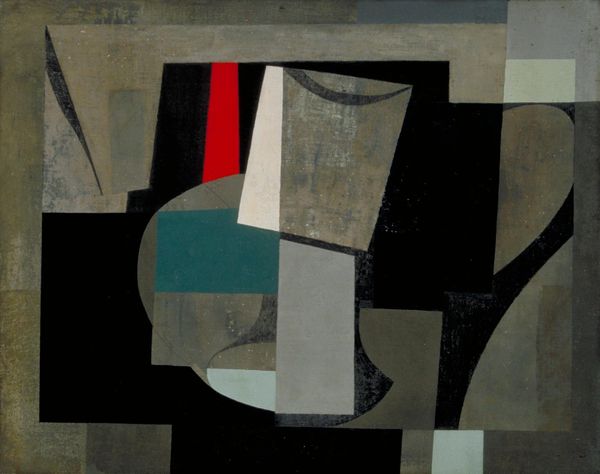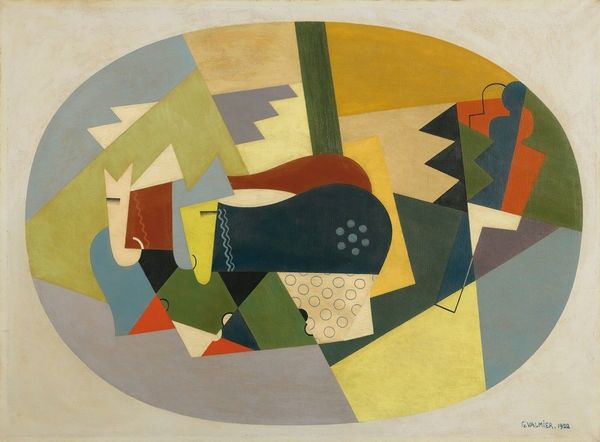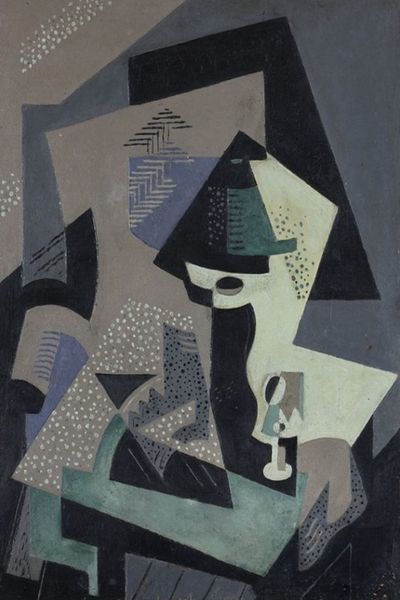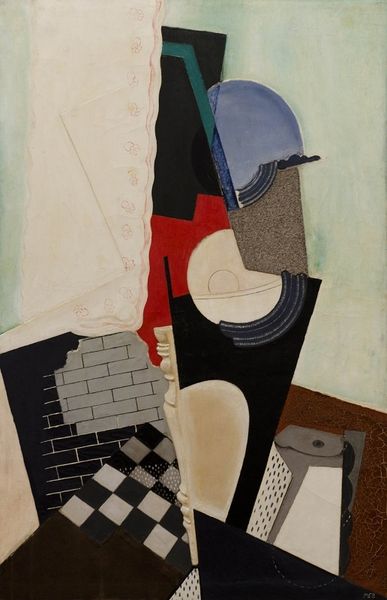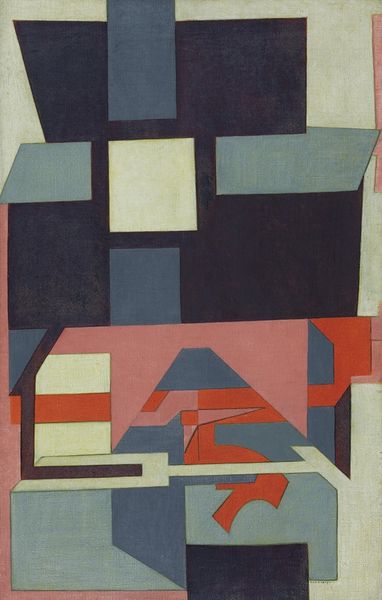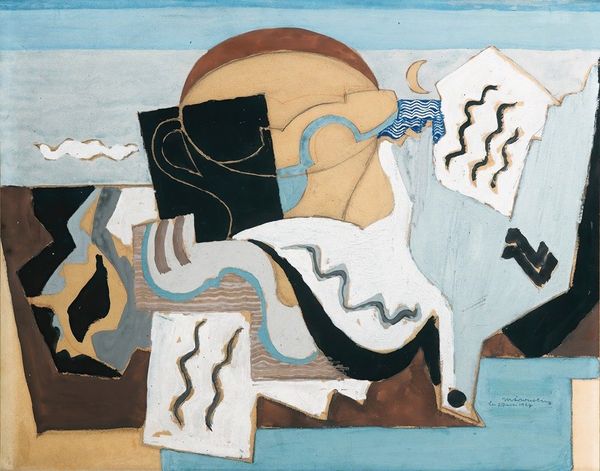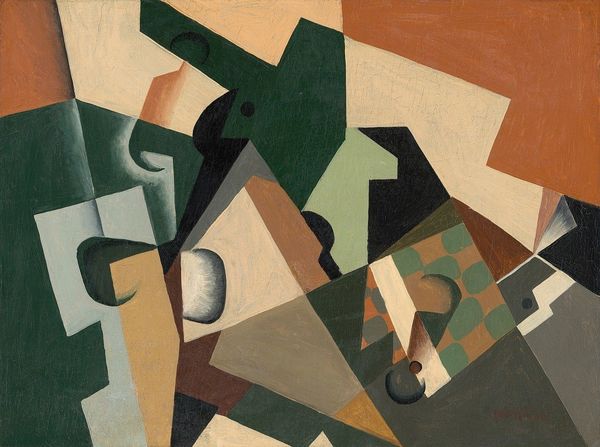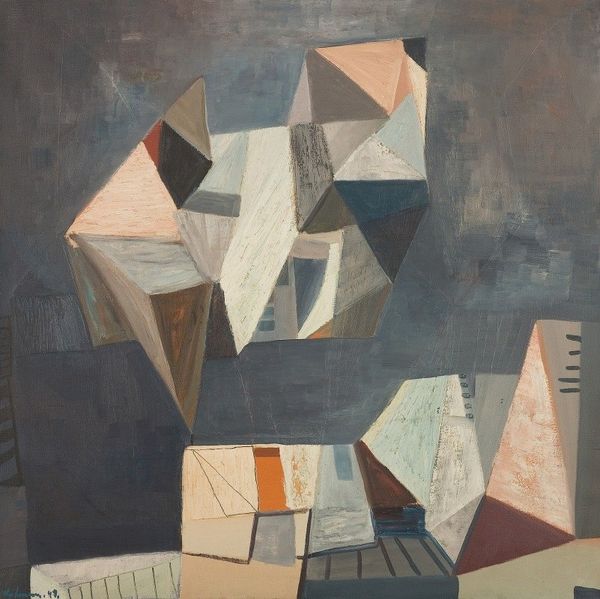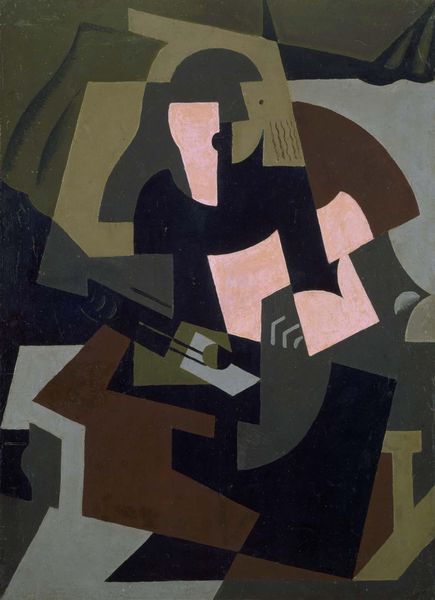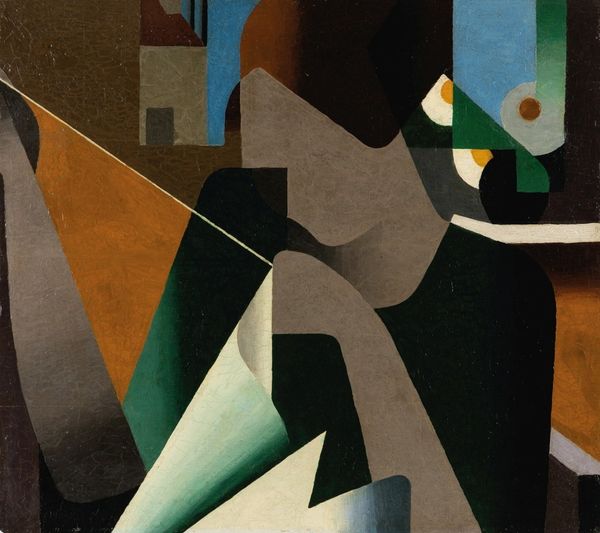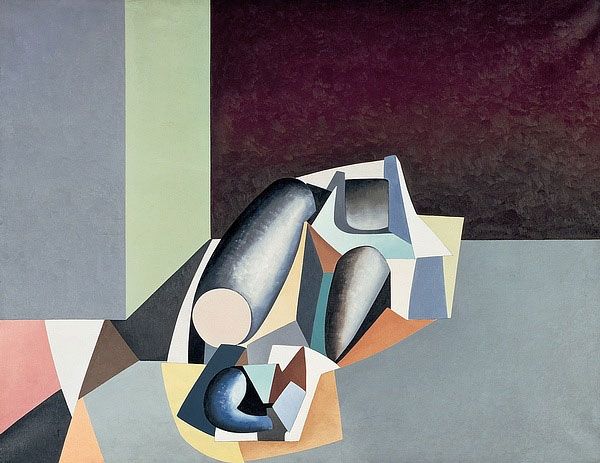
painting, oil-paint
#
cubism
#
abstract painting
#
painting
#
oil-paint
#
figuration
#
abstract
#
oil painting
#
abstraction
Copyright: Public Domain: Artvee
Curator: We're looking at Louis Marcoussis's "Figures on a Beach" from 1930. It's an oil painting, showcasing his distinct approach to Cubism. Editor: It immediately strikes me as unsettlingly static. Despite the implied setting, there's a palpable tension, a frozen quality in the composition. The restricted palette reinforces this. Curator: Indeed. Considering its creation, the painting reflects the interwar period—a time of disillusionment following World War I. The beach, often associated with leisure and freedom, here seems constrained, mirroring the anxieties of the era. Editor: The geometric fracturing of the figures, while typical of Cubism, serves here to further isolate them. Each plane exists almost independently, creating a sense of detachment rather than cohesion. The textures are fascinating, particularly the pointillist-like areas in the background. Curator: Absolutely. Marcoussis was deeply influenced by synthetic Cubism. What's interesting to consider is how the deconstruction of form challenges conventional representations of the body and the environment. Think about the societal pressures to conform, particularly for women, during the 1930s. Editor: I find the lack of depth intriguing, almost a flattening of space. It forces the viewer to confront the surface, the materiality of the paint itself. The contrasting textures – the smooth planes against the granulated areas – create a subtle visual push and pull. Curator: Right. It's less about portraying reality and more about presenting an interpretation of experience. Perhaps an experience marked by displacement, alienation, a breaking apart of the familiar world. Editor: For me, the power lies in the stark geometry and the quiet tension it generates. It is an evocative interplay of forms, textures, and understated colors. Curator: Understanding the social landscape surrounding the artwork deepens its resonance, lending it a new dimension when considering history and experience. Editor: Yes, close analysis reveals how he creates a self-contained world of shape, line, and surface.
Comments
No comments
Be the first to comment and join the conversation on the ultimate creative platform.
